Our Technology
Oxygen Imaging
O2M’s core technology is inversion recovery pulsed electron paramagnetic resonance oxygen imaging (EPROI) invented by O2M’s co-founders.
EPROI is a noninvasive oxygen mapping technology.
It measures the relaxation maps of a water-soluble, oxygen-reporting trityl molecule (OX063 or its deuterated version OX071, also known as OX063-D24) that distributes in a body upon injection. Oxygen concentration is linearly related to trityl relaxation rates.
Tissue oxygen maps obtained using our technology can be used to develop enhanced therapies.
The examples include but are not limited to:
- Cancer research, diagnostics, and treatment
- Assessment of therapy outcome
- Development of artificial cell replacement devices
- Drug development
- Vitality probing of artificial cell replacement devices
Electron Paramagnetic Resonance
- Zeeman effect - splitting of magnetic particle energy levels into several states in the presence of a static magnetic field
- The transition between these states results in absorption or emission of power
- The transition can be excited using oscillating magnetic field with particular frequency – magnetic resonance
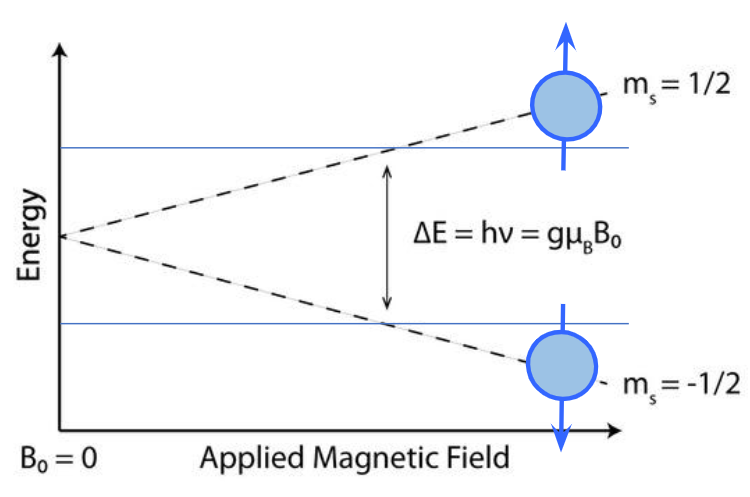
How EPROI is Different from MRI
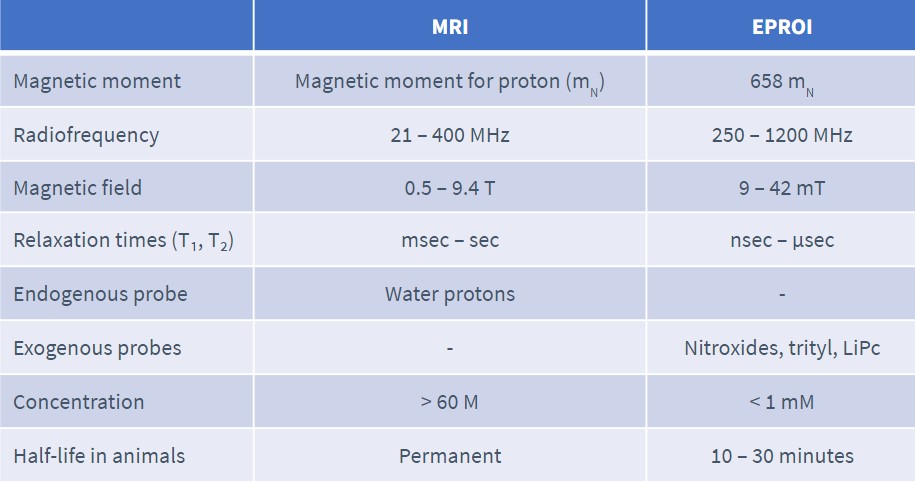
Magnetic Field vs Penetration Depth in EPROI
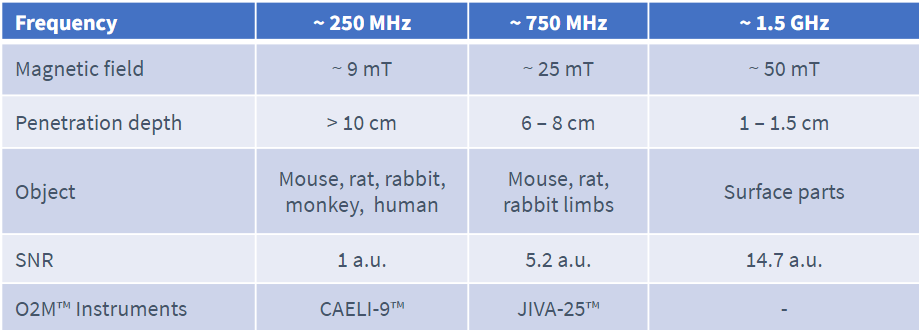
EPROI Spin Probes
Trityl OX063/OX071
The oxygen imaging using EPROI requires contrast agent, trityl OX063 or its deuterated version OX071. OX071 has many unbeatable qualities:
- Stable radicals
- Water soluble and non-toxic
- Single EPR line
- High SNR at physiologic settings
- Trityl is added in vitro (0.5 mM – 1 mM concentration)
- Trityl is injected systematically via I.V. or I.P. route in animals (150 µL – 300 µL of 72 mM stock solution). In tumors, trityl can also be injected via intra-tumoral injections
- Fast clearance from animals (10 – 30 min). No adverse effect reported from hundreds of animals imaged
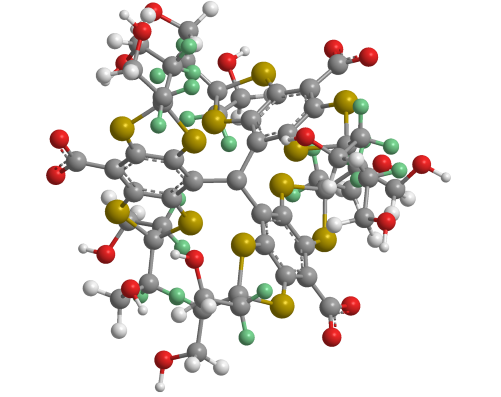
Ball-and-stick model of OX-071³⁻. Carbon atoms are depicted in grey, hydrogen in white, deuterium in green, oxygen in red, and sulfur in gold.
Applications of Our Tech
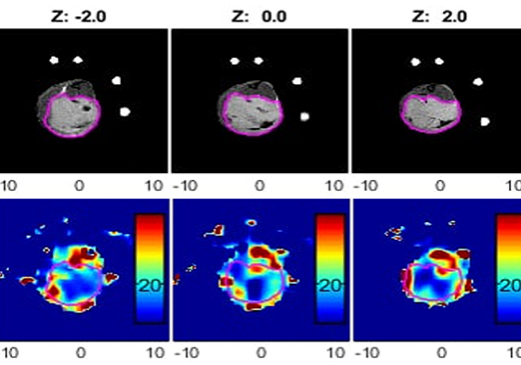
Tumor Hypoxia
Spatial heterogeneity in tumor hypoxia is the most important factor in regulating tumor growth, development, aggressiveness, metastasis, and effective treatment outcome. It has been known that most tumors are often characterized by hypoxia or low oxygen levels (pO₂ < 10 torr/mmHg). An accurate oxygen concentration is needed for Oxygen Guided Radiation Therapy (OGRT) to reduce the overall radiation dose. O2M's patented technology has been shown to be highly effective in measuring tiny voxels of hypoxic tumor.
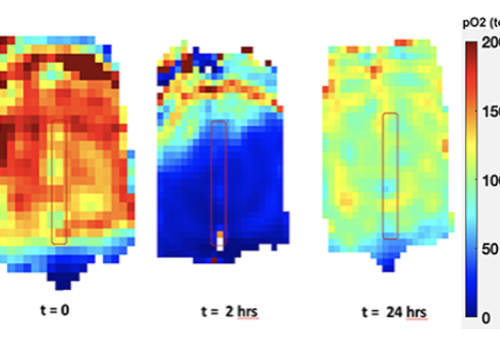
Type 1 Diabetes (T1D)
T1D mellitus is an autoimmune disorder in which the body’s immune response destroys the insulin-producing islet cells. Islet transplantation therapy has shown significant promise; however, the lack of oxygen supply to the highly metabolic islet cells is the major contributing factor to the failure of cell transplantation devices. Backed by JDRF, O2M team is helping researchers optimize islet cell replacement devices.
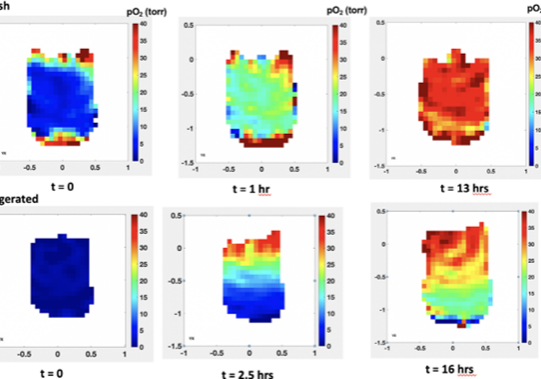
Biomaterials Assessment
Oxygen affects cell proliferation, differentiation, metabolism and apoptosis. Biomaterials have different oxygen diffusion profile based on their treatment. Oxygen monitoring in biomaterials and artificial tissues will avert hypoxia induced cell death, control cell differentiation, and overall improve the graft quality.
Recent Publications Featuring O2M™
In Vivo pO2 pO2 Assessment in Subcutaneous and Intraperitoneal Sites Using Imaging of Solid Oxygen Probe
Tissue Engineering Part C: Methods, 2022
Amniotic growth factors enhanced human pre-adipocyte cell viability and differentiation under hypoxia
Journal of Biomedical Materials Research, 2022
A Bioinspired Scaffold for Rapid Oxygenation of Cell Encapsulation
Nature Communications, 2021
An Inverse-Breathing Encapsulation System for Cell Delivery
Science Advances, 2021
EPR Everywhere
Applied Magnetic Resonance, 2021
Cyclic Hypoxia: An Update on Its Characteristics, Methods to Measure It and Biological Implications in Cancer
Cancer, 2020
Abstract 1646: Preclinical Oxygen Imager for Cancer Oxygenation Studies
Cancer Research, 2020
For a full list of our publications, see our Publications page
